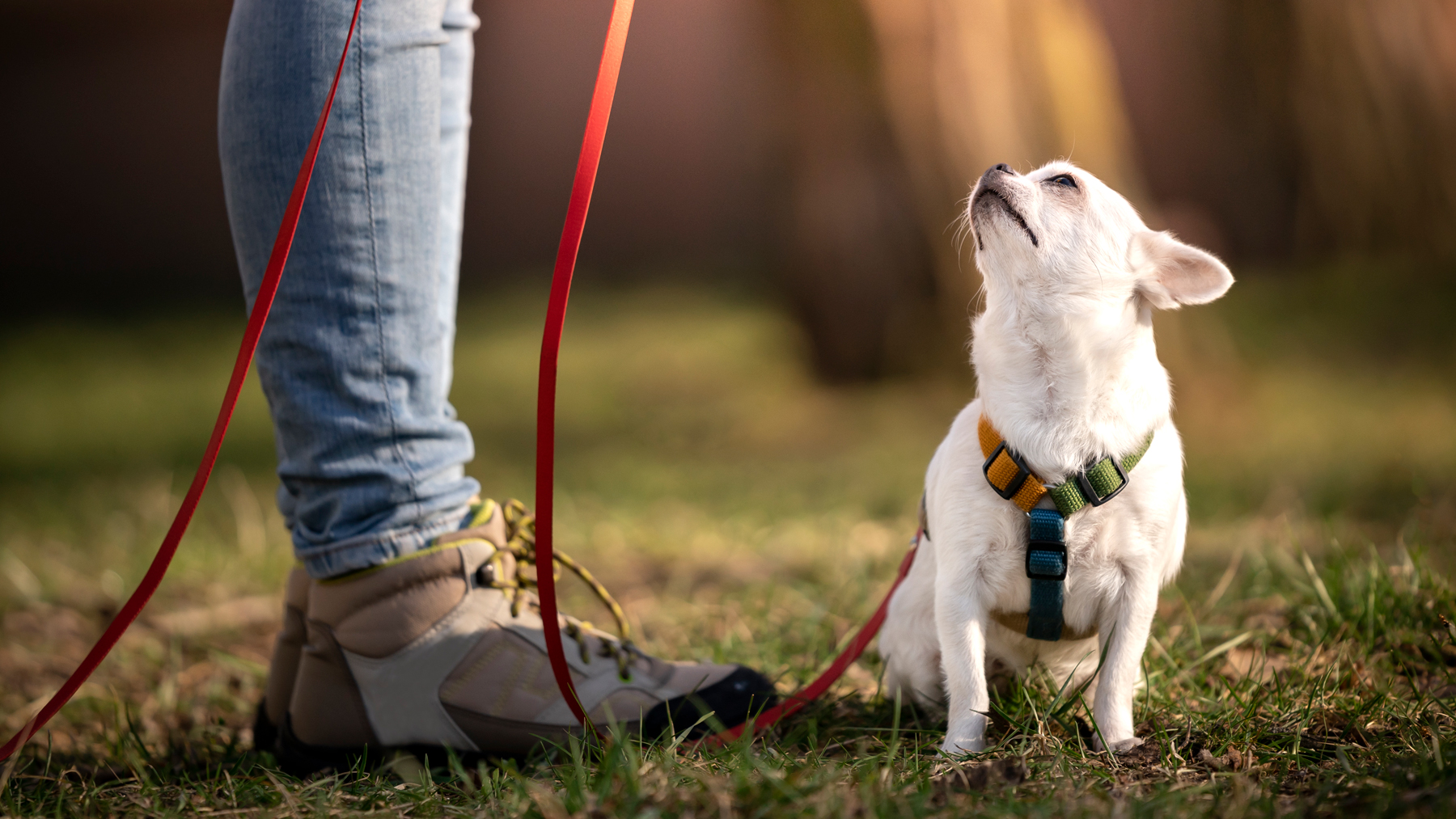
While dog owners spend a lot of puppyhood teaching verbal commands, like ‘sit’ when crossing the road or ‘leave’ when they won’t drop one of their favorite puppy toys, one dog trainer believes that many owners underestimate the power of teaching non-verbal cues.
This can especially come in handy when leash training and learning how to stop a dog pulling on a leash. Leash training plays a crucial role in the development of a well-behaved dog and in the realm of leash manners, non-verbal communication holds immense value.
Discovering the power of non-verbal cues, especially the non-verbal ‘sit’ command, can revolutionize the way you walk your dog. With expert insights from dog trainer and founder of Pack Leader University, Ridge Vogel, let’s explore the significance of this fundamental technique for effective leash training.
In a video demonstration shared to Instagram, which you can view below, dog trainer Vogel unveils why the non-verbal sit command can be instrumental during leash training.
Vogel's video showcases the use of sustained leash pressure with a slip lead to convey the desired behavior to dogs. By applying upward pressure, Vogel encourages the dog to sit down, establishing a strong association between leash tension and the sitting response.
Your dog isn't going to instantly understand a slight pull on the leash means to sit, so use your hand to direct the action at first. Vogel does this himself on the dog he is working with in the video.
"The thing the dog needs to understand is that when they feel that leash pressure go up, they put their butt down," explains Vogel. You will get to the point where you no longer need to touch your hand to your dog's rear. By gradually increasing leash pressure, dogs quickly learn to associate the tension with sitting down.
This vital skill not only enhances safety but also empowers owners to effectively manage their dog's behavior and prevent potential risks during walks. He affirms in the Instagram post, "The dog doesn't choke when you put pressure up. Ultimately the dog is in charge of how much pressure it needs to feel before it chooses to release it (by sitting down)."
Mastering the non-verbal sit command is a game-changer in leash training. With simple guidance, like Vogel's revelation, dog owners can unlock the potential of clear non-verbal communication and create a harmonious walking experience. By incorporating this fundamental technique, you can establish a strong foundation for effective leash training and strengthen the bond with your canine companion.







